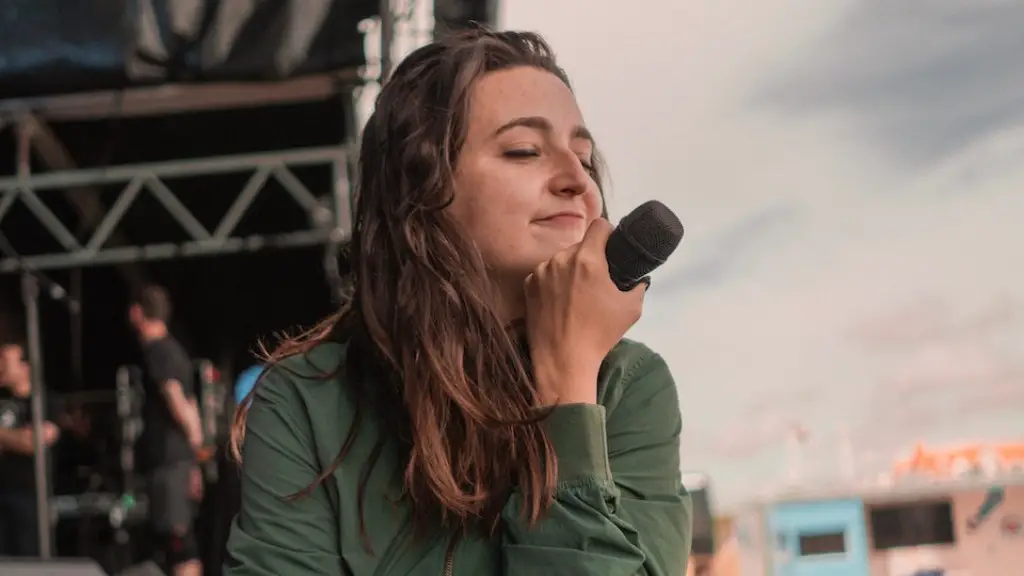Singing alaap is a skill that can be learned by anyone with a desire to sing. There is no one right way to sing alaap, as each singer brings their own unique style to the table. However, there are some guidelines that can be followed in order to help you learn how to sing alaap. First and foremost, it is important to relax your body and mind. This will allow you to open up your vocal chords and produce a clear sound. Secondly, focus on your breath control. This means taking deep, steady breaths in order to maintain a consistent pitch. Lastly, it is important to listen to your own voice and be aware of the subtleties in your tone. By following these tips, you can learn how to sing alaap in no time!
An alaap is the opening section of a raga, in which the melody is introduced slowly and without accompaniment. Ragas are melodic frameworks used in Indian classical music, and each one has its own distinct alaap.
To sing an alaap, start by situating yourself in a comfortable and relaxed position. Choose a pitch – any note will do – and begin singing on that note, letting the sound resonate in your mouth and throat. Once you’re comfortable with that note, move up or down to the next note in the scale, and hold that note for a few seconds before moving on. Repeat this process until you’ve sung your way through the entire scale.
You can then begin to embellish the melody with graceful glides and ornamentation. Once you’re comfortable with the basic melody, you can start to play around with it, adding your own improvised flourishes. Have fun and be creative – there are no rules in alaap!
What is alap in singing?
The alapa is an important part of the raga performance in both northern and southern Indian music. It is an improvised melody that reveals the musical characteristics of the raga. The alapa is usually performed at the beginning of the raga performance, before the main melody is played.
Dhrupad is a vocal genre in Hindustani classical music, characterized by its slow tempo and emphasis on improvisation. The alap is the unmetered, improvised opening section of a dhrupad composition, during which the raga (melodic mode) is introduced to the listener. The alap is typically started at a slow tempo and is unaccompanied except for the tanpura drone.
What is the difference between Taan and Alaap
A taan is a type of composition in Hindustani classical music that is based on a particular raga, or melodic mode. It is usually sung in a fast tempo, and often features complex, rapid-fire vocalizations. The taan can be made to sound different by placing the emphasis, or bal, on different notes, or swars. This is often done in an alaap, or slow-tempo section, before the taan is sung in a faster tempo, or drut laya.
The PurposeALAP is a great resource for lawyers, law students and judges who may be struggling with addiction or mental health issues. The organization provides support and assistance, referrals for evaluation and treatment, monitoring for accountability and compliance, and ongoing guidance and support. This is an important service because it can help people in the legal profession get the help they need to recover and stay sober.
What is the rarest type of singing voice?
The countertenor is the highest sounding male voice type and is capable of singing in the same range as a soprano or mezzo-soprano. This rare voice type is often used in opera and classical music, and has a unique, otherworldly quality.
Breathing for singing consists of 4 stages: inhalation, suspension, controlled exhalation, and recovery. Each stage is important for producing quality sound.
Inhalation is the first stage and is when you take a deep breath in. This breath should be slow and controlled in order to fill your lungs completely.
Suspension is the second stage and is when you hold your breath. This helps to build up the pressure in your lungs so that you can control the exhalation.
Controlled exhalation is the third stage and is when you slowly release the air from your lungs. This should be a smooth and steady release of air.
Recovery is the fourth stage and is when you take another breath in. This helps to replenish the air in your lungs so that you can repeat the cycle.
What comes after alap?
The jor is a formal section of composition in Hindustani classical music that forms the beginning of a performance. It comes after alap and precedes jhala, the climax.
Alap is the opening section of a Hindustani classical music performance in which the melody is improvised without the accompaniment of rhythm. The alap is followed by the bandish, which is a structured improvisation based on a fixed composition. The gat is the instrumental version of the bandish.
What are the 4 main sections of raga music
A raga performance usually has a structure based on defined sections called the alap, jhor, jhalla and gat. The alap is an unmetered, improvised prelude, in which the basic notes of the raga are established. The jhor is a faster-paced section, with more metered improvisation. The jhalla is the climax of the performance, with fast, virtuosic improvisation. The gat is the concluding section, in which the melody is often recapitulated.
A khatka is an ornament that involves performing a single note as a cluster of notes. The main note is featured most prominently, but a neighboring note or two are included as well. The main note is the note that can be sung straight in place of the khatka without affecting the underlying structure of the melody.
How long is an alap?
The alap is the introductory section of a performance in the Hindustani classical music tradition. It is usually totally rhythmless, based upon a free elaboration of the melodic contours of the chosen raga. The alap may vary in length from a few seconds to over an hour.
The Gwalior vocal gharana is widely regarded as the oldest gharana (school of music). It was founded in the first half of the 19th century in the city of Gwalior (now in the state of Madhya Pradesh). The gharana is known for its rich and powerful vocal tradition.
Which khayal sing is alap predominant
Alap is a form of improvisation that is used to explore the characteristics of a raga in a gradual and systematic fashion. It can be sung to vocables in free form, in which case it is known as rāgālāp.
Most khayal performances by artists of Agra gharana commence with the nom-tom alaap, a tradition unique to the Agra gharana. The nom-tom alaap is a slow, meditative form of alaap that is characterized by its use of echo and allusions to various ragas. This type of alaap is said to be representative of the Agra gharana’s emphasis on inner reflective expression.
What does alap or the opening section of a raga features?
The alap is the first part of the elaboration of the raga, during which the soloist brings all the notes and the mood(s) of the raga to life. The alap contains all the main phrases of the raga.
As a mezzo-soprano, Adele has a voice that is both rich and powerful, sitting in a range that is comfortable for most listeners to sing along to. She is a superb vocalist with a great sense of control, able to express a wide range of emotion in her music.
Conclusion
There is no one way to sing an alaap, as it is an improvised introduction to a performance that allows the singer to show off their vocal range and express their own personal style. However, there are a few things to keep in mind when singing an alaap. First, it is important to start off slow and gradually increase the speed as the performance goes on. Second, keep the volume at a moderate level so as not to overwhelm the listener. And finally, let the alaap flow freely and expressively, without getting too caught up in the details.
To sing an Alaap, you will need to first find the note that is comfortable for your voice. Once you have found your note, you will need to practice singing it in different ways. You can practice singing it in your head, in your chest, or in your stomach. You will also need to practice singing it in different speeds. You can start by singing it slowly, and then gradually increase the speed. When you are comfortable with the note and the speed, you can then start to add words to the Alaap.



